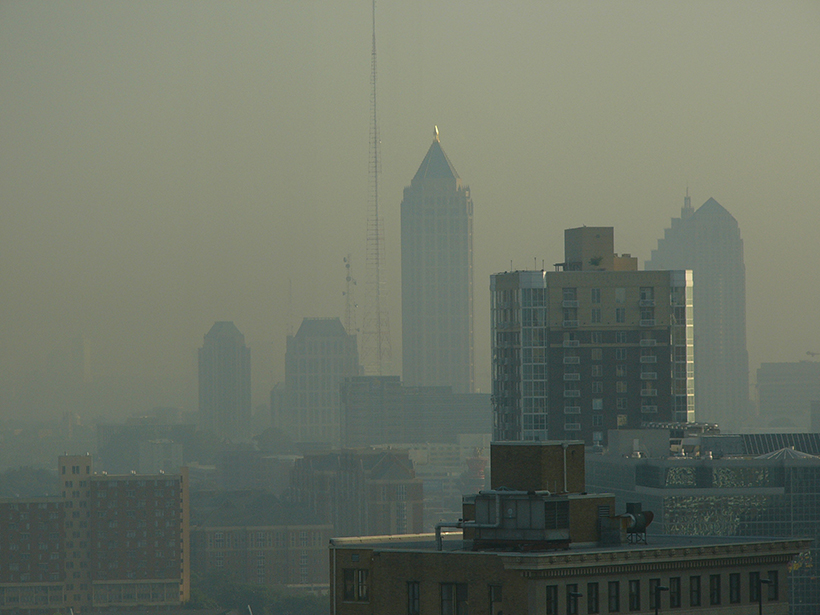Source: Journal of Geophysical Research: Atmospheres
Atmospheric nitrous acid (HONO) is a known precursor to ground-level ozone, but its origins and exact role in atmospheric chemistry still contain numerous mysteries. HONO is known to be emitted from combustion sources, such as fires and automobiles, and formed from reactions of hydroxyl (OH) radicals and nitric oxide (NO). Although HONO quickly breaks down in the presence of sunlight, some modeling and field studies suggest that background levels of HONO across the troposphere are high enough that an additional yet unknown source of HONO might exist.

Now Neuman et al. report on aircraft measurements that seek to shed light on this mystery. In June and July 2013, in the midst of smog season, National Oceanic and Atmospheric Administration aircraft took 18 flights—14 during the day and 4 at night—and sampled the air across the southeastern United States from near the surface to as high as 6.4 kilometers above ground. An onboard chemical ionization mass spectrometer analyzed these air samples for HONO content.
The authors were particularly interested in measuring HONO emissions and production from power plants, urban areas, and industrial and agricultural combustion sources. To quantify those emissions, the authors relied on nighttime measurements, when HONO-degrading sunlight was absent. Daytime measurements allowed the authors to look for other sources of atmospheric HONO.
The authors detected significant levels of HONO at nighttime in agricultural fire plumes, urban plumes, and power plant plumes. Nighttime HONO abundance was greatest in plumes from agricultural burning, the authors found; during the daytime, the ratio of HONO to carbon monoxide was one tenth as high as it was at nighttime, consistent with sunlight breaking down HONO, the authors said.
Outside of these agricultural and power plant plumes, however, observed HONO levels fell below the detection limit and were indistinguishable from zero. The authors conclude that HONO formation in power plant plumes was explained solely by known gas phase reactions of OH and NO.
The findings call into question other studies that have invoked unknown sources to explain HONO levels, the authors said, and suggest evidence is lacking for some other widespread HONO source. Still, the authors noted a limitation to their work: The measurement detection limit was not low enough to rigorously explore HONO formation in the background atmosphere. (Journal of Geophysical Research: Atmospheres, doi:10.1002/2016JD025197, 2016)
—Puneet Kollipara, Freelance Writer
Citation:
Kollipara, P. (2016), No evidence for unknown source of ozone precursor, Eos, 97, https://doi.org/10.1029/2016EO059467. Published on 21 September 2016.
Text © 2016. The authors. CC BY-NC-ND 3.0
Except where otherwise noted, images are subject to copyright. Any reuse without express permission from the copyright owner is prohibited.

